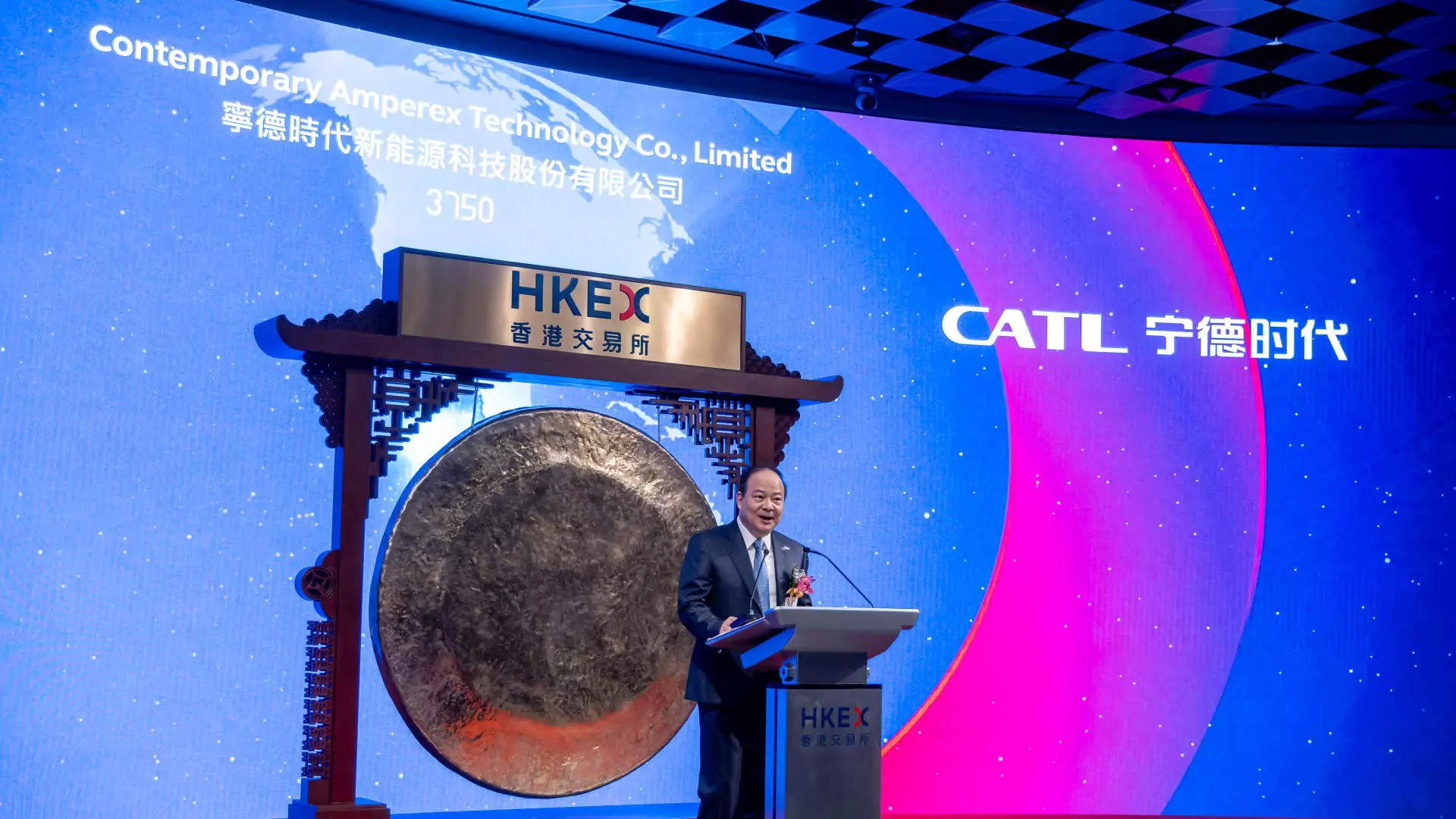Contemporary Amperex Technology Co. Limited (CATL), long recognized as a powerhouse in battery manufacturing, is charting an ambitious course that threatens to redefine not only its industry but also the broader landscape of electric vehicle (EV) technology. While its reputation has historically hinged on producing high-capacity, reliable batteries, recent insights reveal that CATL envisions itself as a comprehensive technological ecosystem rather than just a component supplier. This pivot raises critical questions about the sustainability and realism of such an expansion, especially amid geopolitical headwinds and complex market dynamics.
Morgan Stanley’s bullish outlook underscores the significant shift, highlighting CATL’s integration of artificial intelligence (AI) in monitoring and safeguarding batteries in real time. Their prediction suggests a future where safety and software-driven value-added services could become the core of CATL’s offerings. Yet, one must ask: Are these innovations just a glossy veneer overshadowing underlying vulnerabilities, or do they truly reflect a transformative evolution capable of dethroning traditional hardware players?
This strategic reorientation toward software and ecosystem services is noteworthy, not merely as an ancillary feature but as a potential differentiator. Enhanced safety and reliability, facilitated by AI, could cement CATL’s relationships with automakers, fostering enduring partnerships. However, the inherent challenge lies in turning technological promise into profitable reality, especially given the complex, capital-intensive nature of AI deployment and service provision. Is CATL genuinely positioned to lead this frontier, or is it overestimating its competencies and underestimating competition from tech firms and global giants already embedded in AI and software ecosystems?
Market Valuation and the Overhyped Promise of Licensing
One of the most intriguing developments revolves around CATL’s pursuit of licensing revenue from automakers like Ford. The potential for licensing fees soaring to 1.3 billion yuan ($181 million) annually by 2027 hints at a shift from traditional battery sales to a revenue model rooted in intellectual property and licensing agreements. This approach could significantly bolster CATL’s profit margins, especially if the company manages to leverage its technological edge in new markets such as North America and Europe.
However, this transition is fraught with strategic and geopolitical pitfalls. The U.S., in particular, remains heavily scrutinizing CATL, especially after its inclusion on the Pentagon’s list that restricts Defense Department purchases starting in 2026. The company’s insistence that it is “not engaged in military activities” seems insufficient to quell doubts, which may hinder its expansion plans and reduce the valuation uplift investors expect. Despite these hurdles, analysts remain optimistic, believing that market fundamentals—such as increasing EV adoption in Europe—and CATL’s technological leadership will cause its valuation to re-rate positively. But optimism must be tempered: geopolitical risks are not priced in line with reality and could erupt unexpectedly, damaging the company’s strategic ambitions.
The larger question is whether licensing revenue will materialize as envisioned or become a mere mirage in the flux of international politics. While early signs are promising, the lack of immediate transparency from Ford and CATL leaves investors holding their breath. The company’s aggressive positioning assumes geopolitical stability and smooth regulatory approval, factors that are far from guaranteed.
Geopolitical Tensions and the Illusion of Market Independence
CATL’s international ambitions are demonstrative of a broader industry trend—market expansion against a backdrop of tense geopolitics. The company’s investments in Hungary and Indonesia seek to capitalize on regional opportunities, but they also expose it to geopolitical risks that could derail growth. The European market, in particular, presents both promise and peril; while EU nations are eager for local battery manufacturing to reduce reliance on China, political pushback and national security concerns could complicate operations.
Furthermore, allegations tying CATL to military concerns or environmental issues—regardless of their factual accuracy—serve as a reminder that global supply chains for batteries are deeply intertwined with geopolitical rivalries. The U.S. and China are locked in a strategic competition where any perceived advantage by one side can trigger restrictive policies. CATL’s rallying cry about being “not involved in military activities” may not suffice to mitigate suspicion in Washington or Brussels, potentially freezing out the company from vital markets or depriving it of incentives.
Yet, despite this, CATL’s creators position the company as resilient—arguing that its technological supremacy and diversified global footprint provide enough buffer to withstand political storms. Nonetheless, this confidence appears optimistic. The firm’s financial and strategic future hinges not only on technological breakthroughs but also on navigating a treacherous geopolitical terrain that could accelerate or hinder its rise.
Technological Edge or Overconfidence?
The technological advancements claimed by CATL, especially in battery innovation and AI-powered safety, are impressive but require careful scrutiny. The company’s recent partnerships—like Zeekr’s hybrid systems and Xiaomi’s EV batteries—serve as endorsements of its technological prowess. Such collaborations validate CATL’s position in the industry’s technological vanguard.
However, technological leadership in batteries is a double-edged sword. The rapid pace of innovation attracts fierce global competition: China’s CATL faces rivals like LG Energy Solution, Samsung SDI, and North American startups eager to chip away at market share. If CATL overstates its readiness or underestimates competitors’ breakthroughs, it risks overextension. AI-driven safety systems, while promising, are complex and costly to develop, and knowledge leaks or delays could erode competitive advantage.
Furthermore, the company’s strategic push into hybrid technology and battery swapping indicates an understanding that future mobility demands diverse solutions. Yet, whether these efforts translate into scalable, profitable technology remains unproven. Their success depends on market acceptance, regulatory approval, and seamless integration into existing vehicle architectures—factors riddled with uncertainties.
Without doubt, CATL’s ambition to be more than a mere battery manufacturer is bold, but even the most optimistic analysts caution that the market may be overestimating its capacity to deliver on these claims swiftly and effectively. The company’s future hinges not only on technological merit but also on geopolitical stability, strategic execution, and market acceptance—all of which are far from assured.

